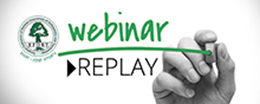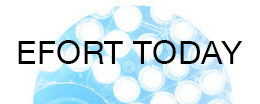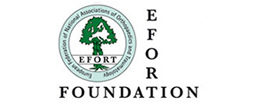Interview with Prof. Jean-Nöel Argenson about the EFORT IC in Marseille
MARSEILLE – The Mediterranean metropolis Marseille will host the 27th EFORT IC on 11 and 12 September 2009. The Centre for Arthritis Surgery, part of the Department of Orthopaedic Surgery at the Sainte-Marguerite University Hospital, has gathered a faculty of renowned speakers from France, Italy, Switzerland, the UK and Sweden. Local Chairman Prof. Jean-Nöel Argenson presents the highlights and topics of this Instructional Course.
Prof. Argenson, the 27th EFORT IC will focus on flexion and function of the knee after arthroplasty. What factors may influence them?
Argenson: The degree of flexion the patient has before the surgery will influence flexion after surgery. This is the most important factor. Other factors include the surgical technique, where it is important to remove any bone spurs, and also the design of the arthroplasty, which is important in increasing the lever arm and restoring normal kinetics. This is important for both the flexion and the function of the knee.
On Friday, 11 September, there will be two live surgery sessions. Which surgical techniques will be demonstrated in these sessions?
Argenson: The first live surgery will demonstrate the treatment of unicompartmental arthritis with unicompartmental knee arthroplasty. This is interesting for patients who have an osteoarthritis limited to one compartment of the knee. In such cases it is not necessary to replace the knee joint in full. The second live surgery will demonstrate high-flexion total knee arthroplasty, focusing on surgical technique and the importance of component position in order to restore correct kinetics and correct flexion.
Another topic will be the evaluation of flexion in knee arthroplasty. What evaluation tools will be discussed?
Argenson: There are various tools to evaluate flexion following knee arthroplasty. First, there is clinical examination by a surgeon. Then there is the three-dimensional evaluation of the component position. As I just said, the component position has a direct influence on kinetics and flexion. And there is also a kinetic evaluation, which is an individual examination based on a fluoroscopic analysis while the patient is flexing the knee after arthroplasty. Finally, there is also the assessment of the patient themselves with the help of questionnaires specifically dedicated to their quality of life as it relates directly to the state of their knee.
Prof. Thorngren will talk about the Swedish Knee Arthroplasty Register. What role do registers play?
Argenson: It is important to evaluate survival rates for arthoplasty. The best way to do this is to include every arthroplasty in a national register. Scandinavian countries have the best experience with these registers.
“High flexion” is a keyword that will be heard frequently during the lectures. What are the advantages of high flexion, where do you see problems?
Argenson: The advantage of high flexion for patients is the ability to perform activities that may be important for their everyday life. What’s more, it is vital to cultural and social life in some countries, because it is important to be able to kneel or squat. In some countries, high flexion is also key to religious activities such as praying. But there are also potential problems with high flexion. These are the reduction of the area of contact, and subsequently the risk of increased polyethylene wear and also increased instability. This is why we took care to include high-flexion-related considerations with regard to surgical techniques and design in the programme of the IC. The long term outcome is also important – this is why registers are so helpful.
The second day will be dedicated to different surgical techniques – what will participants learn during these lectures?
Argenson: The second day will focus on specific technical points such as patients with limb deformities, and patients who have had previous surgery such as an osteotomy or another arthroplasty. In every patient it is important to study not only bone but also soft tissue. In other words, we have to see what is around the bones, and also the extensor mechanism. These presentations will go into the technical details point by point.
Will this EFORT IC also provide any practical experience for the participants?
Argenson: In the first part of the second day we will have two workshops staged by companies. The companies will be free to organise more technical discussions by bringing technical materials or making presentations on specific points related to designs and instrumentation, etc.
Orthopaedic surgeons from Europe and the Middle East are invited to learn more about knee arthroplasty at this EFORT IC. How many participants are you you expecting?
Argenson: We are planning a course for around 80 participants. The course is specifically dedicated to surgeons interested in knee arthroplasty. So it will really go into depth on the various aspects of this subject.
For more information contact: Patrick Collet at EFORT central office, patrick.collet@efort.org


